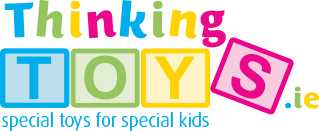
Where Is It?
€40.65 ex. VAT
PSYCHO-EDUCATIONAL OBJECTIVE
- Learning of spatial concepts: above/below (or over/under), in front/behind, right/left (or one side/other side), inside/outside.
- The nature of this material makes it very useful for teaching a second language at oral level
METHOD OF PLAY • Set the house up in a place where it can be easily seen by all the students. • Distribute the cards amongst the students. • The teacher, or a student, should place two animals in one of the positions that appears in the table. The student holding a card with the photo that corresponds to the combination puts a red counter over it. The student who completes his/her card first is the winner.
GAME 1: OPPOSITE CONCEPTS: CARDS WITH A BLUE BORDER The following opposite concepts can be explored using these 25 cards: - above/below (or over/under) - in front/behind - right/left (or one side/other side) - inside/outside Appearing in the different photos are 4 animals: dog, cat, squirrel and rabbit. In each photo two animals are shown, each standing in the opposite position to the other. By combining the 4 opposite concepts and the 4 animals, a total of 48 different combinations are obtained. Each card contains 6 photos: the four opposite concepts plus two others.
GAME 2: SPATIAL ORIENTATION: CARDS WITH A RED BORDER The following spatial concepts can be explored using these 25 cards: - above/below (or over/under) - in front/behind - right/left (or one side/other side) - inside (the concept “outside” has been excluded because it could be confused with “in front” or “at the side”) Appearing in the different photos are two animals: dog and cat. In every photo, each animal appears in a different position. By combining the 7 positions of the 2 animals, 42 different combinations are obtained.
ACTIVITIES
With the house and the animals: • Before moving onto the cards, the teacher should introduce the concept using just the house and the animals. - With the house and one animal (or two animals, one behind the other) the teacher can invent a story involving the different spatial concepts: in front-behind, near-far, around, ... - With two or three animals and without the house, the teacher can devise a story involving a variety of spatial concepts: between, beside, behind - In this way, the student becomes familiar with the spatial concepts which will later appear on the cards, as well as any others that it has not been possible to include; near-far, around, between, ...
With the cards: • The teacher distributes the cards amongst the students, telling them whether to place them with the blue or red border face-up. Depending on the colour of the card border, the teacher (or a student) should select the corresponding animals and explore spatial concepts by placing the animals in various positions around the house while saying the name of the animal and its position out loud. The two tables below, which show the various position combinations appearing in the photos, can act as a guide. The student whose card has a photo showing the same position should place a red counter over it. The winner is the student who manages to complete his/her card first. To make the teacher’s job easier, a table is provided, which can be photocopied, reflecting all the possible animal/position combinations. These can be ticked off during the game to avoid repetition.
CONTENTS
2 GAMES for exploring spatial concepts, comprising: • 25 double-sided LAMINATED CARDS: - Front side of card with blue border: each card contains 6 photos of a house with 2 animals standing in OPPOSITE POSITIONS. - Back side of card with red border: each card contains 6 photos of a house with 2 animals standing in OPPOSITE POSITIONS • A FOAM-RUBBER HOUSE, to be assembled. • 150 ROUND COUNTERS • 4 ANIMALS: DOG, CAT, SQUIRREL AND RABBIT . Presented in a Red Carry Box.
Contains small parts - Not suitable for children under 36 months.
All Language Acquisition All Visual Perception Back To School Teachers Card Games Cards Game Games Language Language Acquisition Prepositions Spatial Concepts Visual Visual Perception

